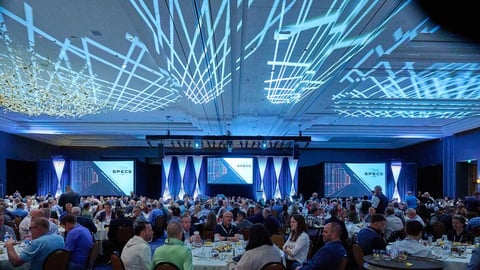Blue Yonder ICON provides supply chain, store insights
The recent Blue Yonder ICON 2023 conference highlighted next-gen supply chain developments and current brick-and-mortar trends.
I attended the Blue Yonder ICON 2023 customer conference held in Las Vegas May 2-5. Event sessions delved into issues including artificial intelligence, cloud computing, and consumer expectations for the store.
Brave new supply chain
In a keynote session, Blue Yonder CEO Duncan Angove described an emerging leading-edge supply chain model based on the latest technology innovation.
“There is a new platform based on artificial intelligence, the abundance of the cloud, and the availability of cheap, plentiful robots,” said Angove. Much as the development of smartphones enabled new industries such as rideshare and on-demand delivery, Angove said the arrival of this new platform will allow the supply chain to be reimagined.
“The supply chain has never been consolidated,” he said. “It consists of deeply specialized point solutions and is fragmented due to technology limitations.”
As a result, Angove said supply chain professionals have to rely on less accurate and timely means of obtaining and exchanging data, such as batch processing and EDI.
However, as a result of new elastic supercomputing capabilities and what he referred to as “infinite intelligence,” Angove said companies can now run their entire supply chain on a single integrated data cloud, enabling seamless, real-time management and communication.
“We finally killed batch,” he stated. Angove also praised the emergence of generative AI technology, such as Chat GPT.
[Read more: ChatGPT is coming – what it means for your enterprise]
“It’s like the discovery of a lost continent with 1 billion people who will work free,” he said. “You can build copilots as a force multiplier for your supply chain team.”
Sainsbury’s shifts supply chain to cloud
Sainsbury’s, the second-largest supermarket retailer in the U.K., followed up Angove’s comments with a discussion of how it is actually putting supply chain systems consolidation into action.
“We were running 23 different supply chain applications,” explained Sainsbury’s director of supply chain Meinir Childs. “Many we at the end life, and it forced us into a siloed way off working with manual workarounds that was very labor-intensive and inefficient. Our supply chain was reactive, not proactive. There was no single version of the truth.”
Pivoting to a supply chain architecture that would meet its future requirements for immediacy, productivity and maximum customer value, Sainsbury’s began shifting to a Blue Yonder environment, based on the Snowflake data cloud platform, in March 2020, just as the COVID-19 pandemic began disrupting the global supply chain.
“We had to take the impact of the pandemic on retail into account,” said Karen Brown, deputy CTO, Sainsbury’s.
The retailer first went live with the new supply chain platform for 40% of its food SKUs in December 2022 and began widescale rollout across food SKUs inn February 2023. Sainsbury’s has input 80 billion rows of historical data into the platform and intends to have all food SKUs running on it by the end of fiscal 2023, with all no-food SKUs operational on the Blue Yonder platform by the end of the fiscal 2024.
According to Childs, Sainsbury’s is working toward implementing what it calls a “Gen 3,” or totally autonomous, supply chain. Data will be the bedrock of this system.
“Data is king,” said Childs.
In-store shopping by the numbers
During the event, Blue Yonder also released some interesting proprietary data about consumer brick-and-mortar shopping preferences. When asked what factors make a positive store experience, respondents gave answers including:
- Quality of service from staff (32%).
- Selection and variety of product at location (30%).
- Location, layout and organization of products (20%).
- Amount of time it takes to check out and pay (6%).












